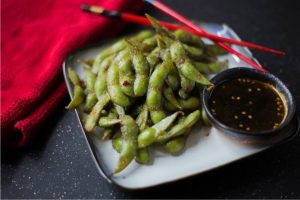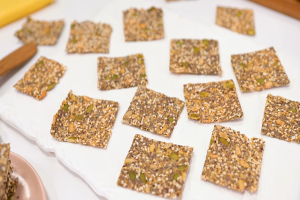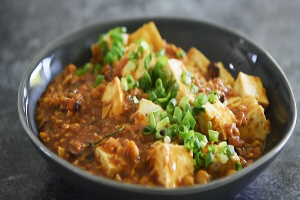ASIA
Asian Vegan Recipes: A Journey Through Flavorful Plant-Based Traditions
Asian cuisine is a vibrant tapestry of flavors, textures, and aromas, offering an abundance of vegan recipes that are both delicious and nourishing. Rooted in centuries-old traditions and a deep respect for nature, many Asian diets naturally incorporate a wide variety of plant-based ingredients. In this column, we’ll explore the diverse world of Asian vegan recipes, highlighting the unique characteristics that define vegan cuisine across the continent.
The Rich Tradition of Indian Vegan Cuisine
India, with its long history of vegetarianism, is a haven for vegan food enthusiasts. Indian cuisine is renowned for its use of spices, which not only add flavor but also provide numerous health benefits. Dishes like dal (lentil stew) and chana masala (spiced chickpeas) are staple vegan options that are both hearty and packed with protein. The use of coconut milk, tomatoes, and an array of spices such as turmeric, cumin, and coriander creates rich, flavorful dishes that are deeply satisfying.
Indian cuisine also features a variety of breads like roti and paratha, which can be paired with vegetable curries to create a complete and balanced meal. Additionally, samosas—crispy pastries filled with spiced potatoes and peas—are a popular vegan snack that offers a delightful combination of textures and flavors.
Chinese Vegan Cuisine: A Celebration of Simplicity and Flavor
Chinese cuisine offers a diverse range of vegan dishes, many of which are rooted in Buddhist culinary traditions that emphasize plant-based eating. Tofu, a versatile soy product, is a cornerstone of Chinese vegan cooking, used in everything from stir-fries to soups. One classic dish is Ma Po Tofu, a spicy and flavorful dish made with silken tofu, fermented black beans, and chili paste. This dish perfectly exemplifies the balance of flavors—spicy, salty, and savory—that Chinese cuisine is known for.
Vegetables play a central role in Chinese vegan recipes, with dishes like Buddha’s Delight (a medley of vegetables and mushrooms) and vegetable dumplings being popular choices. The emphasis on fresh, seasonal ingredients and simple cooking methods, such as steaming and stir-frying, allows the natural flavors of the vegetables to shine through.
Japanese Vegan Cuisine: A Harmony of Taste and Aesthetics
Japanese cuisine is deeply rooted in the concept of umami, the savory fifth taste, which is abundant in plant-based ingredients like miso, seaweed, and mushrooms. This makes Japanese food a natural fit for vegan diets. Miso soup, made from fermented soybean paste, is a quintessential Japanese dish that is both nourishing and flavorful. Paired with a bowl of steamed rice and a variety of pickled vegetables, it forms a simple yet satisfying meal.
Another popular Japanese vegan dish is vegetarian sushi. Instead of fish, fresh vegetables like cucumber, avocado, and pickled radish are used, providing a refreshing and light alternative. The minimalist approach to seasoning, combined with a strong emphasis on presentation, makes Japanese vegan cuisine not only delicious but also visually appealing.
Thai Vegan Cuisine: Bold Flavors and Fresh Ingredients
Thai cuisine is known for its bold and vibrant flavors, which are achieved through the use of fresh herbs, spices, and aromatics. Common ingredients in Thai vegan dishes include coconut milk, lemongrass, galangal, lime leaves, and chili peppers. Tom Yum soup, for instance, is a spicy and sour soup that can easily be made vegan by using mushrooms and tofu in place of shrimp.
Thai green curry is another popular vegan dish, where a paste of green chilies, garlic, and herbs is cooked with coconut milk and vegetables like eggplant and bell peppers. The result is a rich, creamy curry that is both spicy and comforting. Thai cuisine also includes a variety of salads, like som tam (green papaya salad), which is a refreshing mix of shredded papaya, lime juice, and peanuts.
Conclusion: Embracing the Diversity of Asian Vegan Cuisine
Asian vegan recipes offer a world of possibilities for those seeking to explore plant-based eating. From the rich and spicy curries of India to the simple and elegant dishes of Japan, Asian cuisine provides a wealth of options that are both flavorful and nourishing. By embracing the diversity of ingredients and cooking techniques found across the continent, you can enjoy a wide range of vegan dishes that are as satisfying as they are healthy. Whether you’re a seasoned vegan or just starting out on your plant-based journey, Asian vegan cuisine has something to offer everyone.





